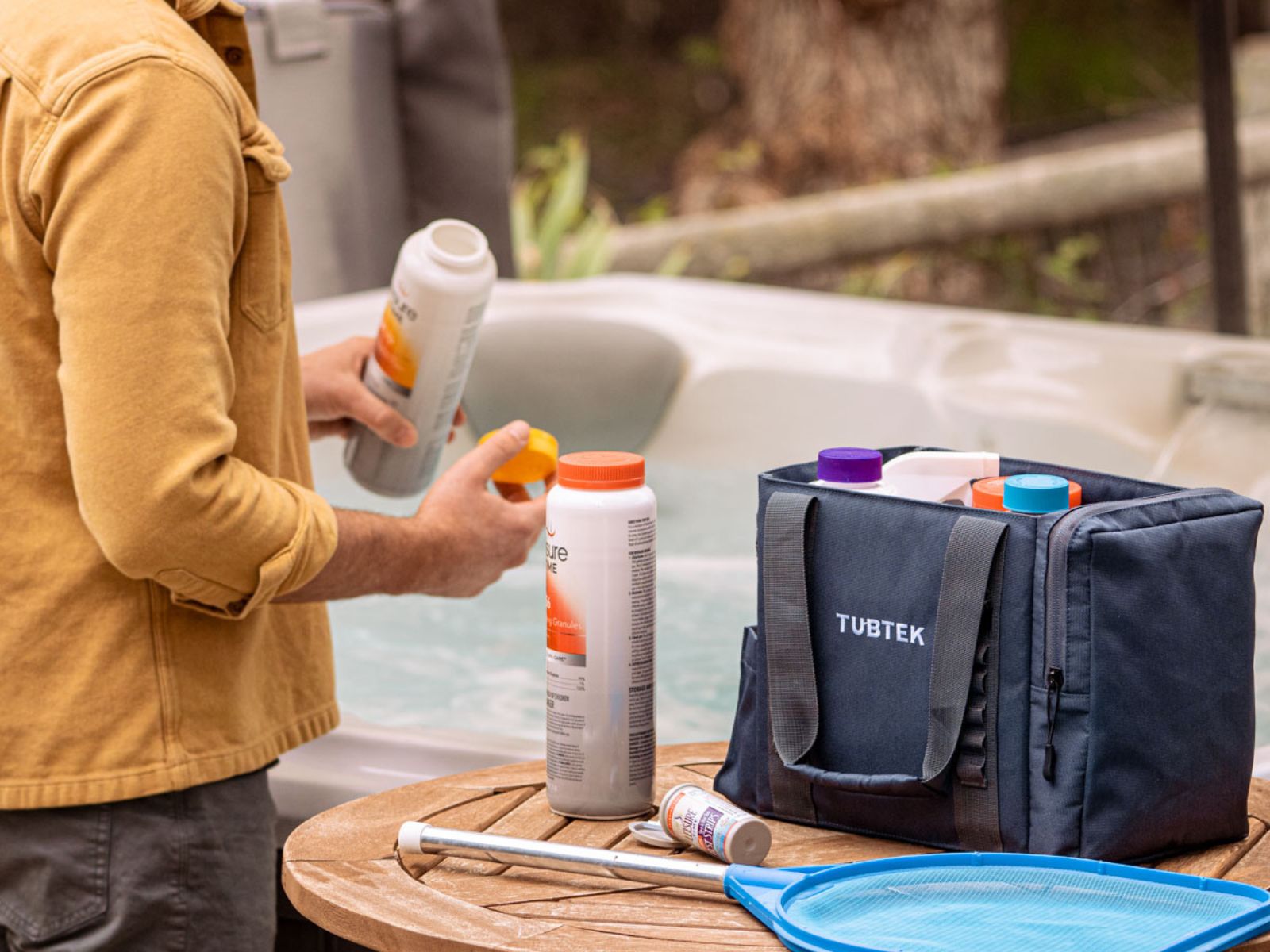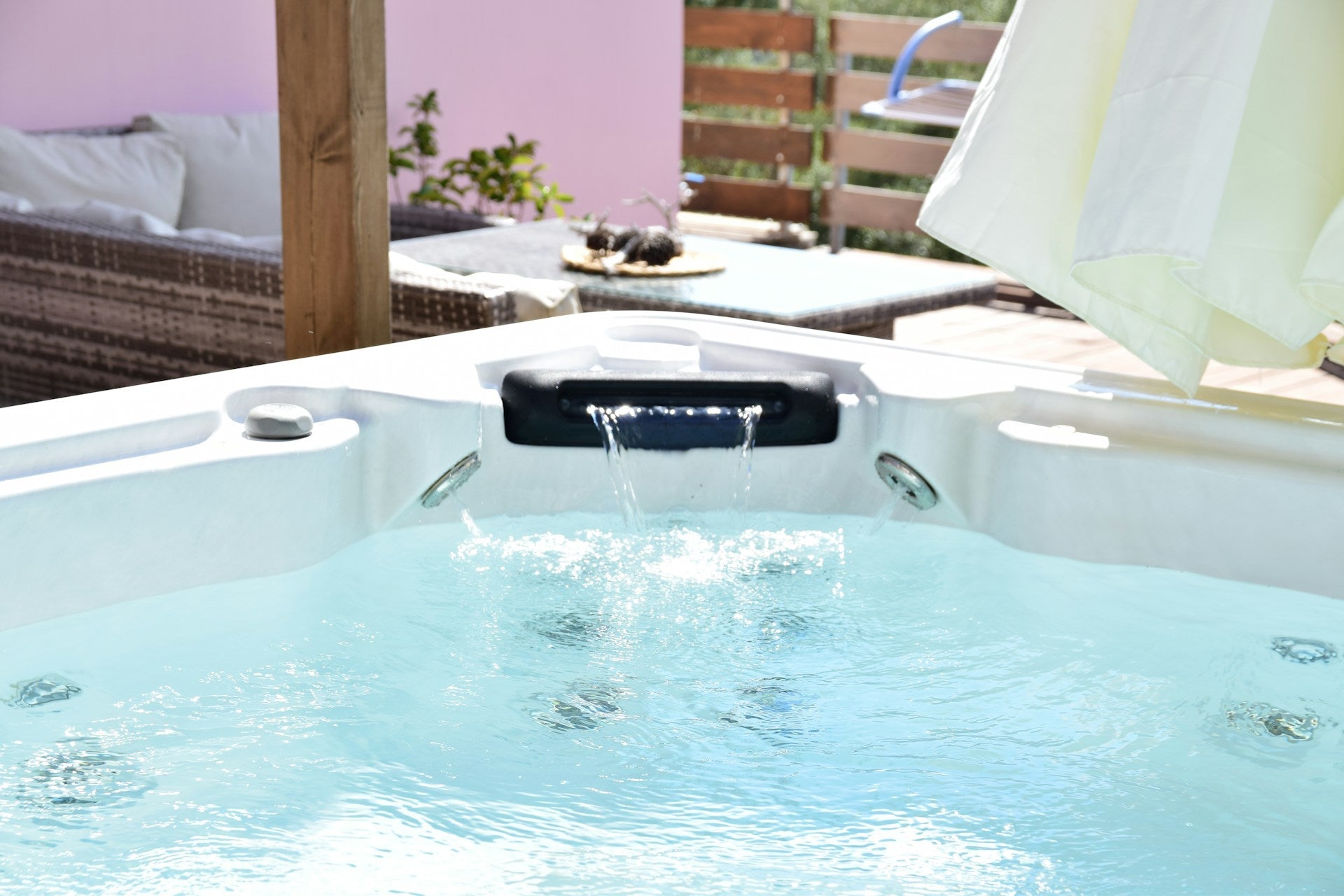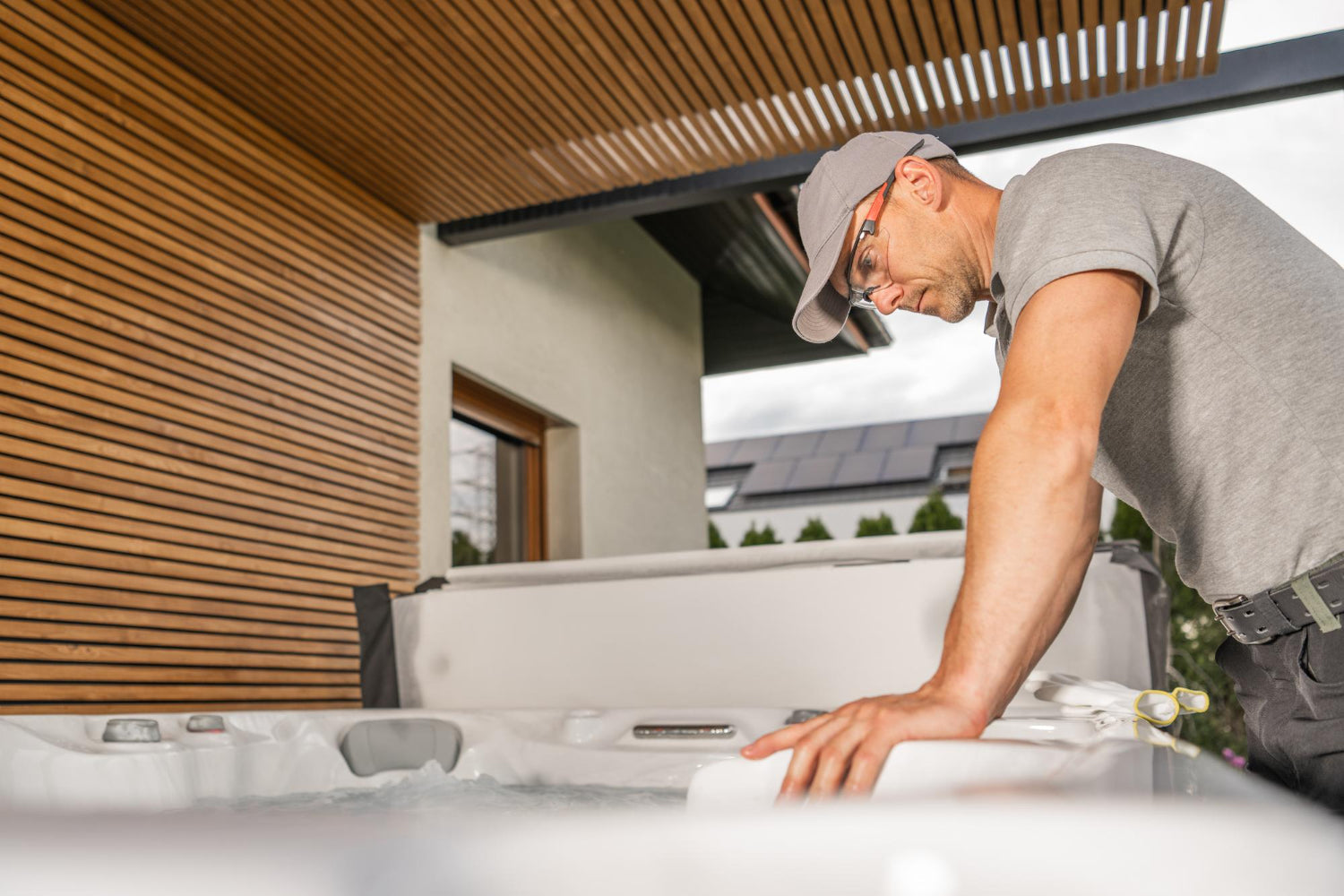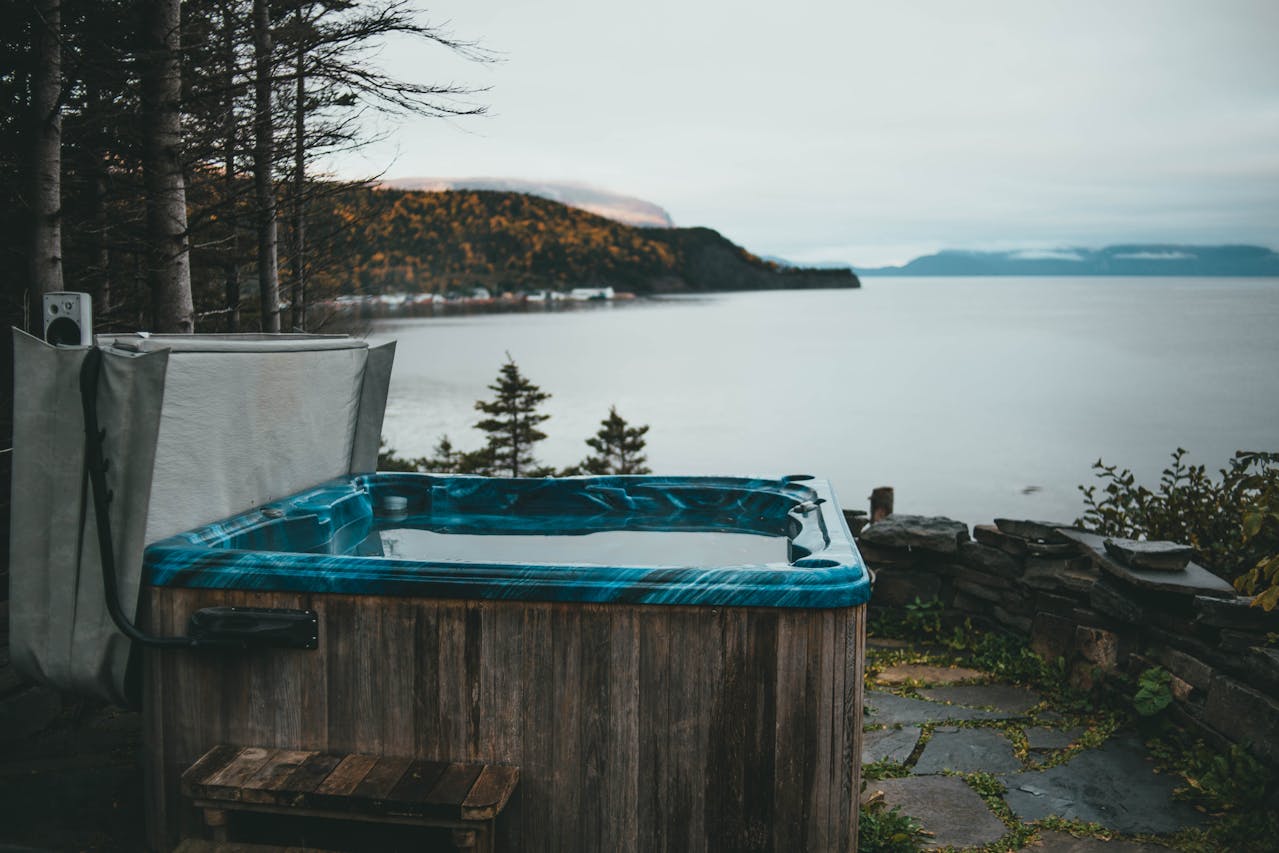Hot Tub Chemicals: What You Need to Know (For Beginners)

As an Amazon Associate we may earn from qualifying purchases.
Hot tubs are a great way to relax and unwind, but they require some extra care to keep them clean and functioning correctly. Hot tub chemicals play an essential role in this process, helping maintain the water chemistry balance while protecting you from harmful bacteria or other contaminants.
Knowing which hot tub chemicals are necessary and how to add them correctly can help ensure that your hot tub is always safe, clean, and enjoyable.
In this article, we'll cover everything you need to know about hot tub chemicals - what's necessary, what you can skip, how to add each one (in the correct order) - plus tips on how to properly store them so that your spa water upkeep will be as smooth as possible!
What hot tub chemicals are necessary
To keep your hot tub safe, sparkling, and scum-free, you'll need more than just good vibes and great hot tub accessories! For that, you'll need some hot tub chemicals. While not all types of hot tub chemicals are necessary for every owner, there are certainly some essentials to always have on hand. These include chlorine or bromine for sanitizing your water, shock for fighting bacteria and algae, alkalinity up, pH up & down, and calcium up & down for keeping your water balanced. Last but not least, a defoamer is used by many to help reduce foam buildup in your hot tub from body oils, personal care products, and food or drinks.
Let's take a look at each one.
Sanitizer (ex. Chlorine)
With so many hot tub sanitizers on the market, it might take a lot of work to choose which one is right for your needs. Do you go the chlorine route or opt for bromine?
Both have advantages and disadvantages, but the decision ultimately boils down to personal preference.
Chlorine is easy to maintain and works quickly, whereas bromine is less irritating on the skin and can be used in a broader range of pH levels.
And if neither of those two strikes your fancy, you also have the option of biguanide, minerals, or a saltwater system. So, when in doubt, try both and go with what makes you feel most comfortable – that's what matters most!
Get your hot tub Sanitizer here ->
pH Up & Down + Alkalinity Up
By understanding the pH level of your hot tub, you can easily keep your water safe and clean.
pH measures how acidic your water is, with neutral (7.2 - 7.8) being an ideal range.
If the pH is on the low side, it can irritate the skin and cause damage to the spa. On the other hand, if it's too high, it can cause eye and skin irritation and make sanitizers ineffective.
To protect against these issues, having both a pH increaser and a pH decreaser on hand allows you to efficiently balance out your hot tub so that it remains at its optimal level.
Additionally, including an alkalinity Increaser in your bag of chemicals can help balance your water chemistry by ensuring your alkalinity and pH levels don't drop below recommended levels.
Get your hot tub Balancers here ->
Shock
Hot tub shock is a crucial part of properly maintaining a hot tub, yielding many benefits.
Hot tub shock eliminates contaminants like skin oils, dirt, sweat, and other residues that can quickly build up in the water. This mixture of contaminants creates an unhealthy environment that can cause the hot tub to become cloudy and smelly. People call this "hot tub scum".
Using hot tub shock, you can kill bacteria, break down organics and restore the sparkle of the hot tub water - making it safe, inviting, and enjoyable again! Not only does this make your hot tub look better, but it also keeps your family safe.
There are two types of shock for your hot tub: chlorine and non-chlorine.
Chlorine-based hot tub shock is a mixture of chlorine and other chemicals like stabilizers to keep the chlorine levels in check. This type usually takes a bit longer to dissolve in the water than a non-chlorine shock but is more effective at killing bacteria or algae.
Non-chlorine hot tub shock differs in that it doesn't have any chlorine. Instead, it helps the chlorine in your hot tub oxidize the water faster.
In short, your choice of hot tub shock should consider how quickly you want the shock to start working, how frequently you use your hot tub, and if you're looking for specifically chlorinated or non-chlorinated products for whatever reason.
Get your hot tub shock here ->
Calcium Up
The calcium hardness in your hot tub water is vital to maintain.
Too much, and you end up with potentially foamy or cloudy water and scale buildup on your hot tub, while too little can cause structural damage to its metal components from corrosion.
To ensure that your hot tub operates optimally, measure the calcium hardness levels regularly and keep a Calcium Hardness Increaser on hand. Doing so helps create ideal conditions in the tub, preventing any issues caused by imbalanced calcium.
Unfortunately, there is no good chemical to decrease calcium in your hot tub water, so if your calcium levels get to high, it is recommended to just drain it and refill with fresh water.
Get your hot tub calcium increaser here ->
Defoamer (optional)
To ensure your hot tub remains free from foam, it is recommended to have a good Defoamer on hand.
Without a defoamer, small amounts of oils and lotions can quickly build up in the water due to everyday use, creating a layer of foam on the surface.
While it can be minimized through proper aquatic care routines (rinsing off before a soak, keeping food/drinks out of the tub, and maintaining balanced chemistry), these steps are not always foolproof — especially if you expect multiple guests or have a party.
Having a good defoamer can easily tackle any foam-related issue, quickly when in a pinch.
Get your hot tub Defoamer here ->
A few other optional chemicals
Having a few other chemicals on hand will keep your hot tub clean and functioning at its best.
A Clarifier eliminates cloudy water and helps protect your hot tub from contaminants, while Metal Gone keeps metals like iron and copper away.
Enzymes are vital as they can break down organic contaminants like sweat, body oils, and food particles.
Filter cleaner is a almost a necessity if you do not rinse your filters often. For more information, read our article "A Simple Guide To Cleaning Your Hot Tub Filter".
Additionally, it would be best to consider investing in a Descaler that keeps calcium buildup (such as scale) at bay.
All these additional chemicals available put you in the driver's seat when it comes to keeping your hot tub healthy - guaranteeing there will be less maintenance down the line!

How to Add Hot Tub Chemicals in the Right Sequence
Hot tubs are a great way to relax and enjoy quality time with family and friends. Maintaining water cleanliness in your hot tub is essential for a safe, enjoyable experience.
Adding chemicals to your hot tub is an important part of upkeep; however, it should be done in the proper order.
- Alkalinity - Ensure your alkilinity level is perfect. A wonky alkanlinity level will make your pH level very difficult to balance.
- pH - Once your alkalinity is level, go ahead and fix your pH. After a few weeks, you will start to notice whether your water naturally leans pH high or pH low. If low, you will most likely need to add more pH Up then you think. If high, add pH down (or just leave the jets running for 10-15 minutes!)
- Calcium - About once a week, double check the Calcium levels and adjust as needed.
- Shock - Create a weekly Shock routine, maybe the same time you check the Calcium. You don't need to Shock it often, but a weekly dose will help keep things running smooth.
- Defoamer - Use as needed. You will typically start to see the water be a little more cloudy than usual. Maybe you just had a party? Grandkids just come over for a swim?
How to store your hot tub chemicals
If you want your hot tub to stay in optimal condition, you must ensure that your water care is up-to-date.
Easily accessing the chemicals required to keep your water clean is vital. If you have to rummage around for too long every time you'd like to treat the tub, it takes longer than necessary and can quickly become a nuisance and deter against regular maintenance.
One of the keys to keeping your hot tub running smoothly is properly organizing and storing your chemicals.
At TUBTEK, we understand the needs of hot tub owners. That's why we designed our ChemBag with your convenience in mind! You can store all of your necessary chemicals and products safely at arm's reach, so there is no need to carry extra supplies or take multiple trips to add what you need.
This water resistant design also ensures that spills and splashes won't ruin your supplies - a definite bonus for any hot tub owner.
Hot tub care and storing chemicals don't have to be complicated when you have a ChemBag - it's an easy way to make enjoying your hot tub worry-free.
Get your hot tub ChemBag here ->
Conclusion
Hot tub care doesn't have to be complicated or overwhelming!
The right knowledge, products, and access to resources can be simple and enjoyable. Understanding the basics of hot tub chemistry is key - from recognizing when to add chemicals to have the right storage option for your supplies.
Plus, taking extra steps like regularly testing and sanitizing can help keep your water clean, clear, and safe for everyone who enjoys it.
Hot tub ownership is an exciting adventure that requires proper planning and dedication - but with a few easy changes here and there, you'll be all set for many years of luxurious relaxation.












